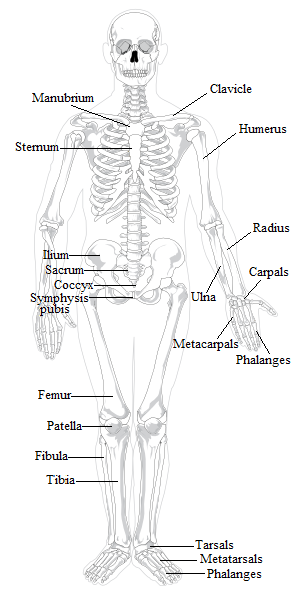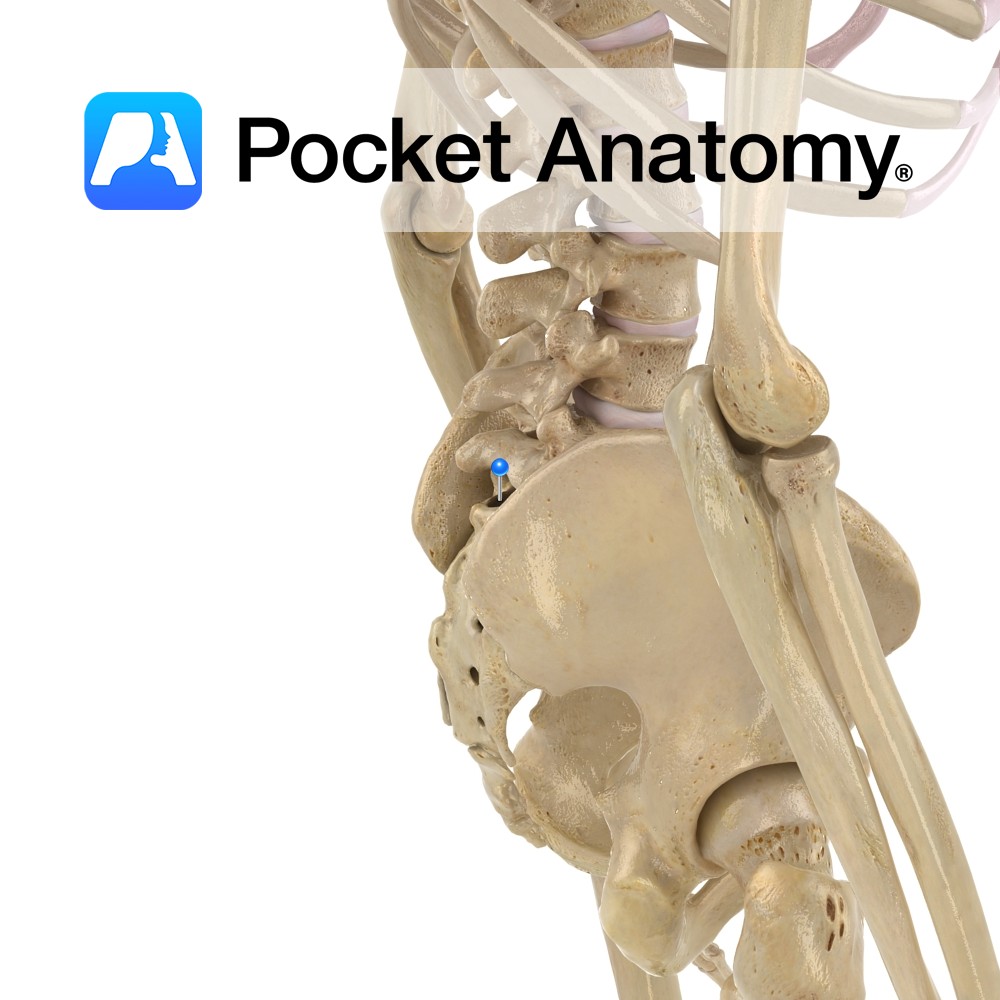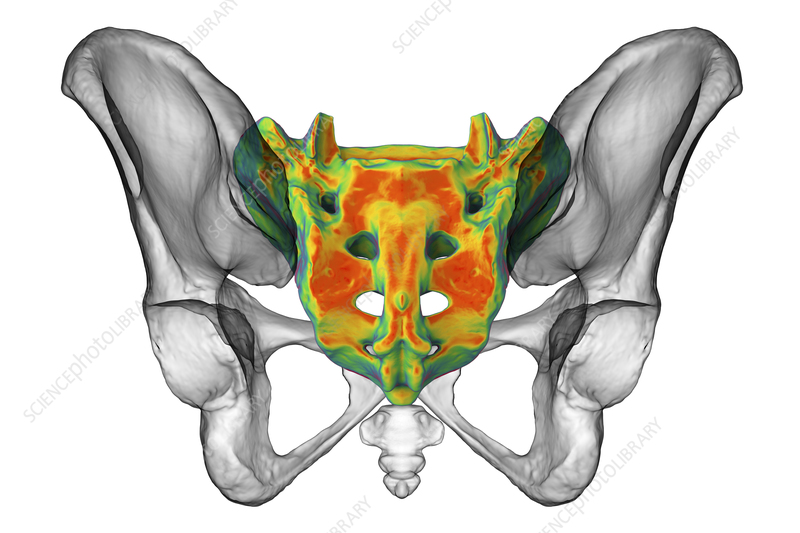The sacrum is a vital component of the human skeletal system, playing a crucial role in supporting the body’s weight, protecting the spinal nerves, and connecting the spine to the pelvis. This triangular-shaped bone, located at the base of the vertebral column, is composed of five fused vertebrae (S1-S5) that form a single, sturdy structure. In this article, we will explore the meaning, function, and significance of the sacrum, as well as its anatomical features and common issues associated with it.
Table of Contents
– What Is the Sacrum?
– Where Is the Sacrum Located?
– Functions of the Sacrum
– Anatomy of the Sacrum
– Common Issues and Conditions
– Frequently Asked Questions
What Is the Sacrum?
The sacrum is a large, flat, triangular-shaped bone that connects the spine to the pelvis. It is formed by the fusion of five individual vertebrae—S1 through S5—that occur during early adulthood. This fusion results in a strong, stable structure that plays a key role in supporting the body’s weight and providing structural integrity to the lower back and pelvis.

Where Is the Sacrum Located?
The sacrum is situated at the base of the vertebral column, between the last lumbar vertebra (L5) and the coccyx (tailbone). It is positioned between the right and left iliac bones of the hip, forming part of the pelvic girdle. The sacrum acts as a bridge between the spine and the pelvis, contributing to the stability and movement of the lower body.
Functions of the Sacrum
The sacrum serves several essential functions in the human body:
- Support and Stability: The sacrum helps support the weight of the upper body and transfers it to the pelvis and legs. It provides structural support for the spine and ensures proper alignment of the lower back.
- Protection of Nerves: The sacrum surrounds and protects the spinal nerves of the lower back. These nerves are responsible for transmitting signals between the brain and the lower extremities.
- Formation of the Pelvic Cavity: Along with the hip bones, the sacrum forms the pelvic cavity, which houses and protects the organs of the reproductive and excretory systems.
- Weight Transmission: The sacrum aids in transmitting the body’s weight from the spine to the hips when standing or sitting.
- Hip Stability: By connecting the spine to the pelvis, the sacrum contributes to the stability of the hip joints, allowing for smooth movement and balance.
Anatomy of the Sacrum
The sacrum has a unique shape, resembling an inverted triangle with a wide base at the top and a pointed apex at the bottom. It consists of three main surfaces: the dorsal (back), lateral (side), and pelvic (front) surfaces. Additionally, the sacrum contains a hollow canal called the sacral canal, which runs along its core.

Key Bony Landmarks
- Base: The top portion of the sacrum, where the first sacral vertebra (S1) is located. It articulates with the fifth lumbar vertebra (L5).
- Apex: The pointy end of the sacrum, which connects to the coccyx.
- Sacral Canal: A hollow space that runs from the base to the apex of the sacrum, housing the cauda equina and filum terminale.
- Dorsal Surface: The back surface of the sacrum, featuring ridges and crests formed by the fusion of vertebrae.
- Lateral Surface: The side surface, which includes the auricular surface that articulates with the ilium of the pelvis.
- Pelvic Surface: The front surface, marked by transverse lines and the sacral promontory, which forms part of the pelvic inlet.
Articulations
The sacrum connects to several other bones:
- Lumbosacral Joint: Connects the sacrum to the fifth lumbar vertebra (L5).
- Sacrococcygeal Joint: Connects the sacrum to the coccyx.
- Sacroiliac Joint: Connects the sacrum to the ilium of the pelvis.
Ossification
At birth, the sacrum is not fully formed. Instead, it consists of 4-6 separate vertebrae that gradually fuse together as a person grows. This process typically begins in the mid-teens and is usually complete by the early to mid-twenties. In some cases, variations in the number of sacral vertebrae can occur, though the most common configuration is five fused vertebrae.
Common Issues and Conditions
While the sacrum is generally a strong and stable structure, it can be affected by various conditions:
- Sacroiliac Joint Dysfunction: This condition involves pain originating from the sacroiliac joint, often due to hypermobility or hypomobility. Symptoms may include low back pain that radiates down the leg.
- Fractures: Although rare, the sacrum can fracture due to high-impact trauma, such as a fall or car accident. Individuals with osteoporosis or rheumatoid arthritis are more prone to stress fractures.
- Coccydynia (Tailbone Pain): While not directly related to the sacrum, the coccyx (tailbone) is closely connected to it. Coccydynia can result from trauma, childbirth, or prolonged sitting.
- Sciatica: Pain in the lower back and legs can sometimes be caused by issues at the L5-S1 junction, where the lumbar spine meets the sacrum.
Frequently Asked Questions
Q.1. Is the sacrum part of the axial skeleton or the appendicular skeleton?
Ans. The sacrum is part of the axial skeleton, which includes the bones of the head, neck, and trunk.
Q.2. How many vertebrae make up the sacrum?
Ans. The sacrum is typically composed of five fused vertebrae (S1-S5), though variations can occur.
Q.3. What is the purpose of the sacral canal?
Ans. The sacral canal is a hollow space within the sacrum that houses the cauda equina and the filum terminale, which are important components of the nervous system.
Q.4. Can the sacrum be injured?
Ans. Yes, the sacrum can be injured, especially in cases of high-impact trauma. However, it is relatively rare due to its strong, fused structure.
Q.5. Are there differences between the male and female sacrum?
Ans. Yes, the female sacrum is generally wider and more backwardly curved than the male sacrum, which helps accommodate pregnancy and childbirth.
Conclusion
The sacrum is a critical component of the human skeletal system, playing a vital role in supporting the body, protecting the spinal nerves, and connecting the spine to the pelvis. Understanding its structure, function, and potential issues can help individuals better appreciate the importance of this unique bone. Whether you’re experiencing back pain or simply curious about your anatomy, the sacrum is a fascinating and essential part of the body that deserves attention and care.

Stay updated with the latest news on health and anatomy by visiting our website regularly. Explore today’s headlines and learn more about the human body and its remarkable functions.











More Stories
What is a Shaft? Understanding the Definition and Uses in Engineering and Mechanics
Understanding the Skattebo Injury: What You Need to Know on Twitter
US Trending News: Skattebo Injury Update: What You Need to Know Today